The combined observations from two generations of X-Ray space telescopes have now revealed a more complete picture of the nature of high-speed winds expelled from super-massive black holes. Scientist analyzing the observations discovered that the winds linked to these black holes can travel in all directions and not just a narrow beam as previously thought. The black holes reside at the center of active galaxies and quasars and are surrounded by accretion discs of matter. Such broad expansive winds have the potential to effect star formation throughout the host galaxy or quasar. The discovery will lead to revisions in the theories and models that more accurately explain the evolution of quasars and galaxies.
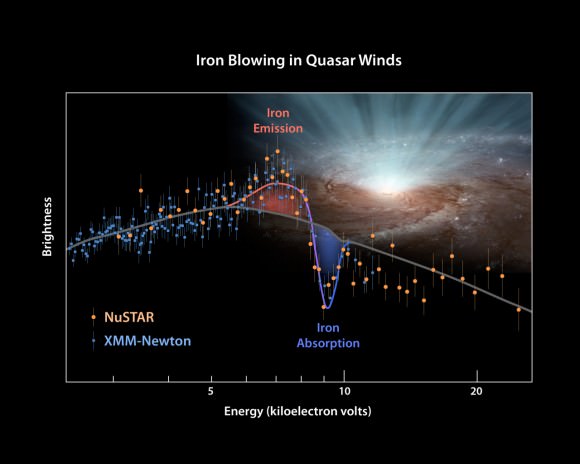
X-Rays are the signature of the most energetic events in the Cosmos but also are produced from some of the most docile bodies – comets. The leading edge of a comet such as Rosetta’s P67 generates X-Ray emissions from the interaction of energetic solar ions capturing electrons from neutral particles in the comet’s coma (gas cloud). The observations of a super-massive black hole in a quasar billions of light years away involve the generation of x-rays on a far greater scale, by winds that evidently has influence on a galactic scale.
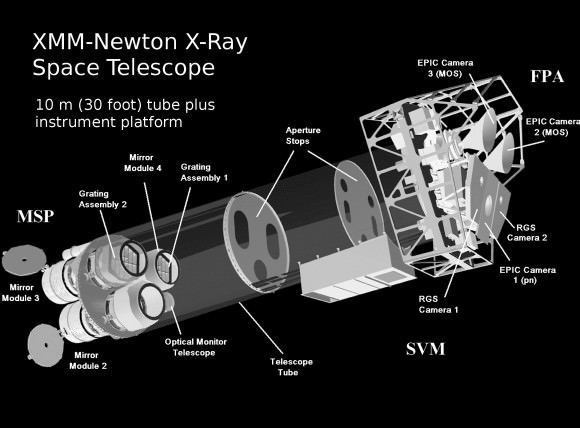
The study of star forming regions and the evolution of galaxies has focused on the effects of shock waves from supernova events that occur throughout the lifetime of a galaxy. Such shock waves trigger the collapse of gas clouds and formation of new stars. This new discovery by the combined efforts of two space telescope teams provides astrophysicists new insight into how star and galaxy formation takes place. Super-massive blackholes, at least early in the formation of a galaxy, can influence star formation everywhere.
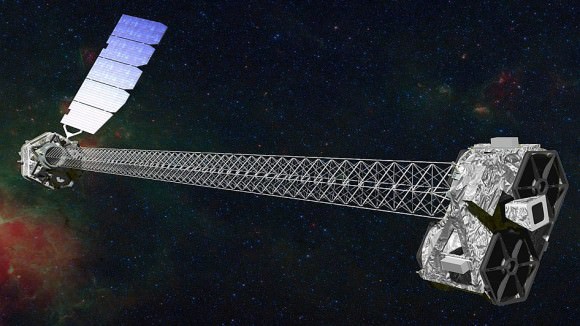
Both the ESA built XMM-Newton and the NuSTAR X-Ray space telescope, a SMEX class NASA mission, use grazing incidence optics, not glass (refraction) or mirrors (reflection) as in conventional visible light telescopes. The incidence angle of the X-rays must be very shallow and consequently the optics are extended out on a 10 meter (33 foot) truss in the case of NuSTAR and over a rigid frame on the XMM-Newton.
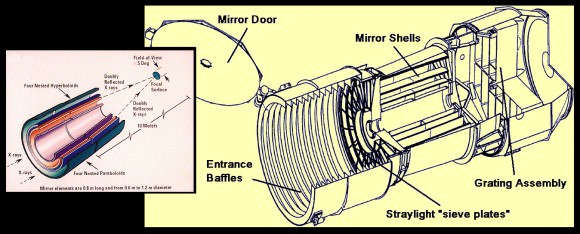
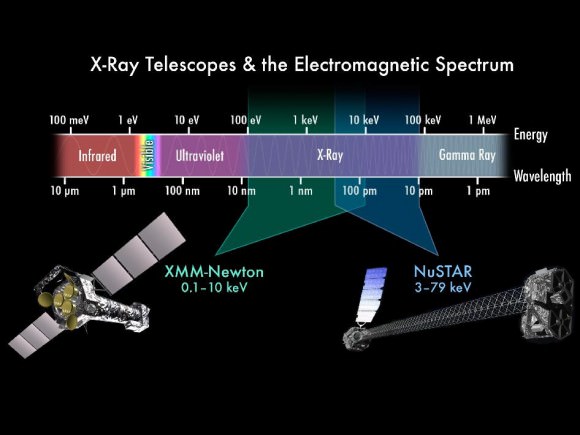
The ESA built XMM-Newton was launched in 1999, an older generation design that used a rigid frame and structure. All the fairing volume and lift capability of the Ariane 5 launch vehicle was needed to put the Newton in orbit. The latest X-Ray telescope – NuSTAR – benefits from tens years of technological advances. The detectors are more efficient and faster and the rigid frame was replaced with a compact truss which required all of 30 minutes to deploy. Consequently, NuSTAR was launched on a Pegasus rocket piggybacked on a L-1011, a significantly smaller and less expensive launch system.
So now these observations are effectively delivered to the theorists and modelers. The data is like a new ingredient in the batter from which a galaxy and stars are formed. The models of galaxy and star formation will improve and will more accurately describe how quasars, with their active super-massive black-holes, transition into more quiescent galaxies such as our own Milky Way.
Reference:

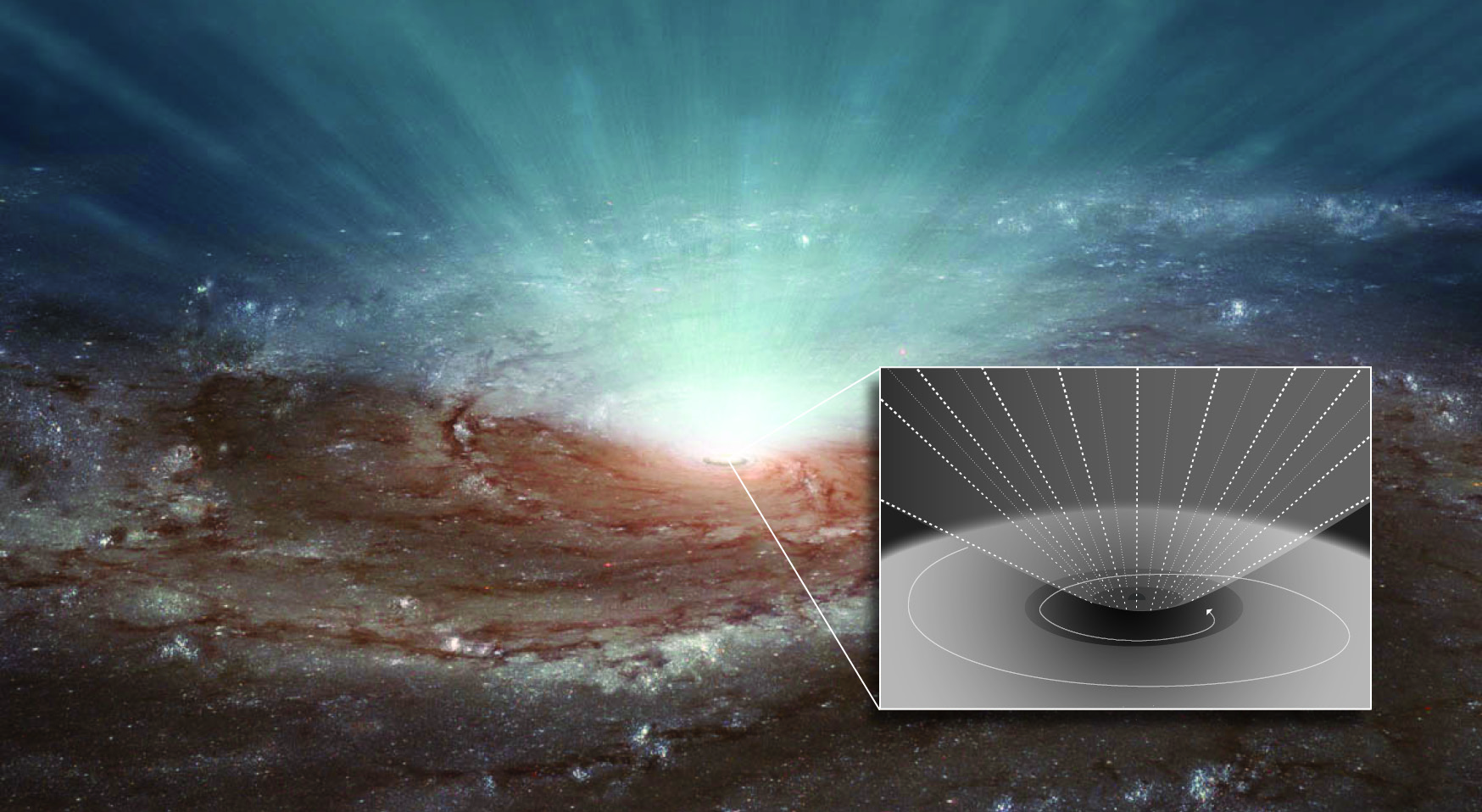
Great Article Tim. But everybody should be careful of all encompassing theories. With rogue stars and planets wandering the Universe, I’m sure that at least one time one of those wandered through a gas cloud and sparked a collapse into a star. Just we might have added to our knowledge the way most clouds collapse into stars. It’s by no means the only way clouds have collapsed into stars.
Yes, I agree. Its just that now there are two wholesale ways star formation in galaxies are triggered or extinguished – super-nova shock waves and winds from these S-M black-holes. Dark matter and energy might be other big factors, too. Thanks.